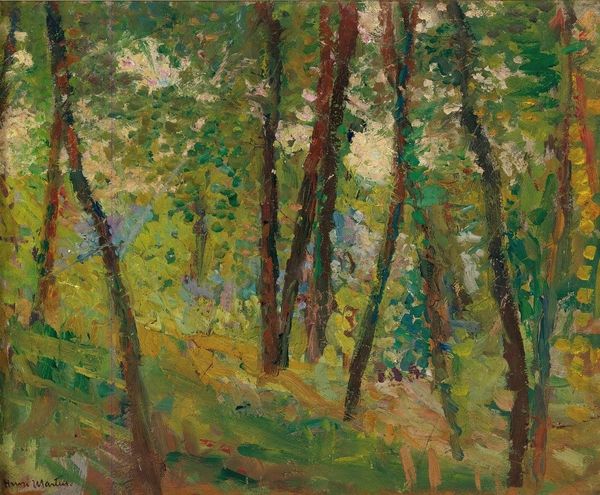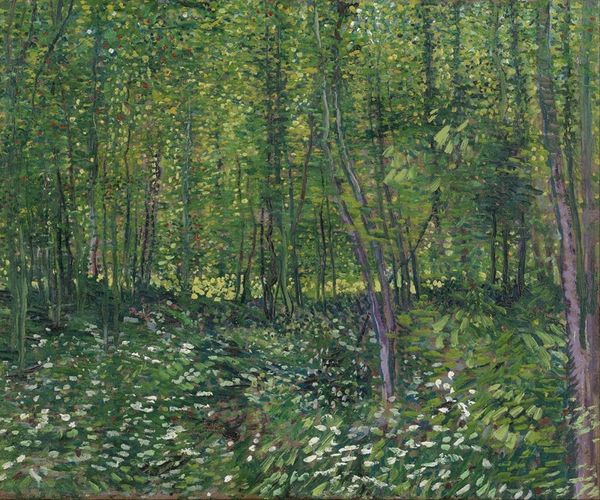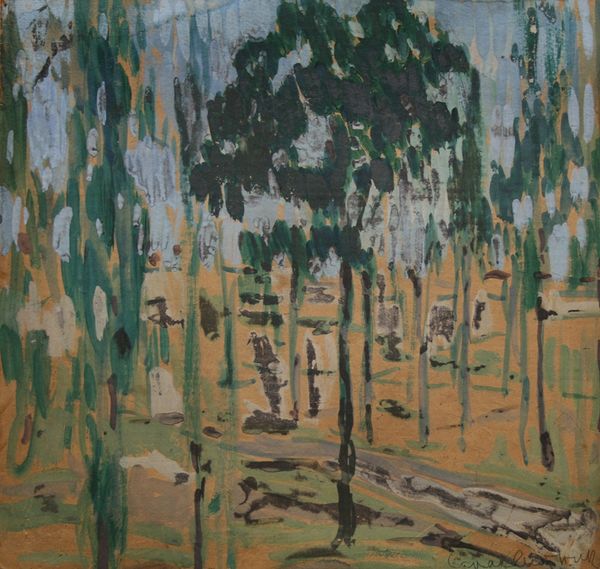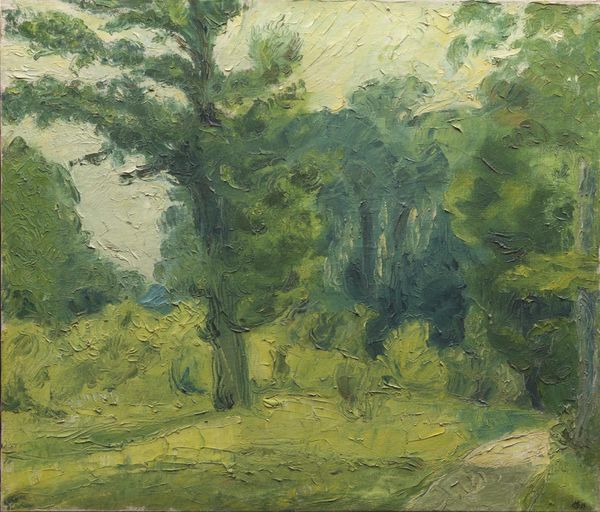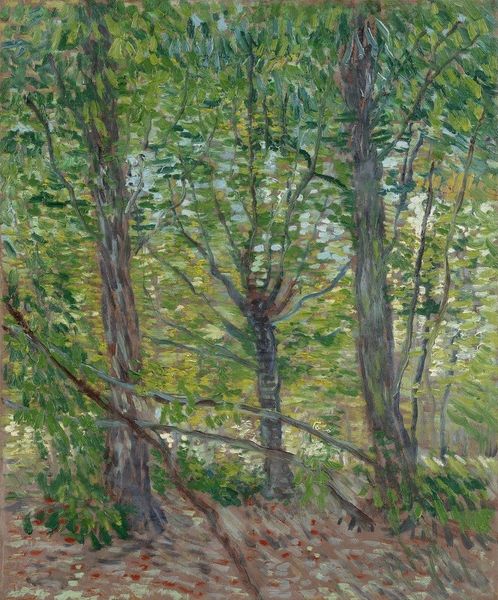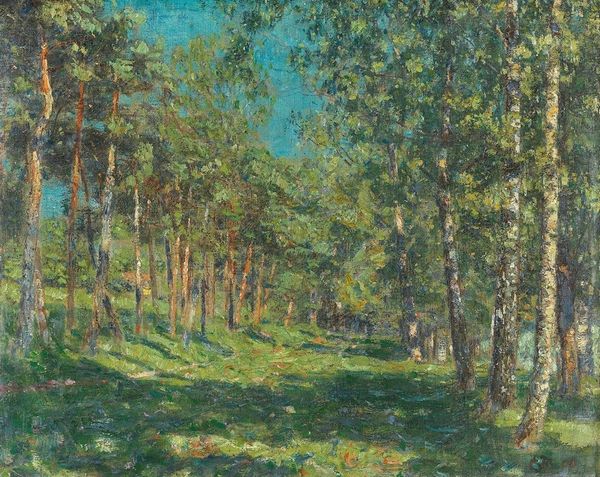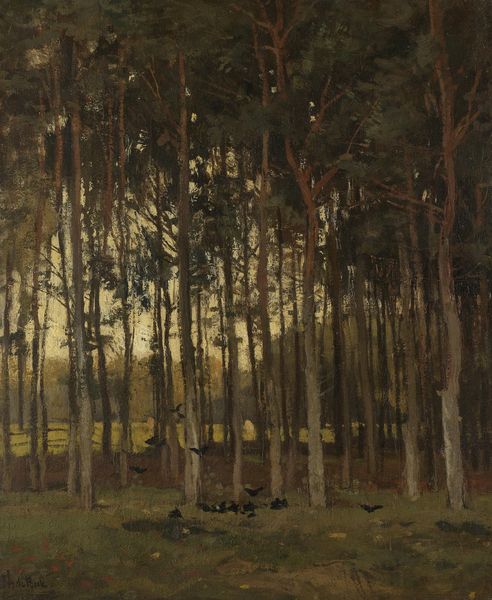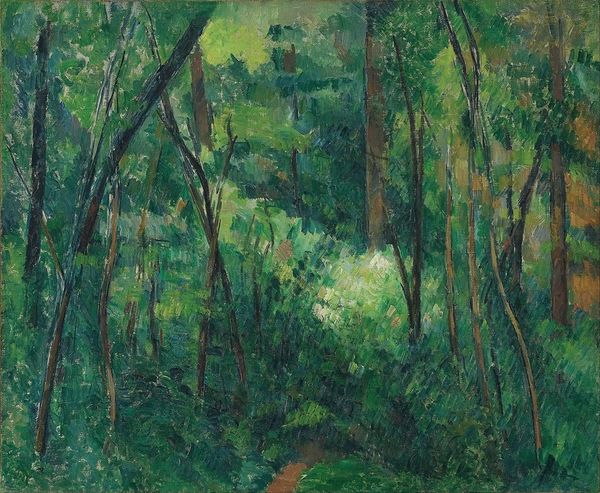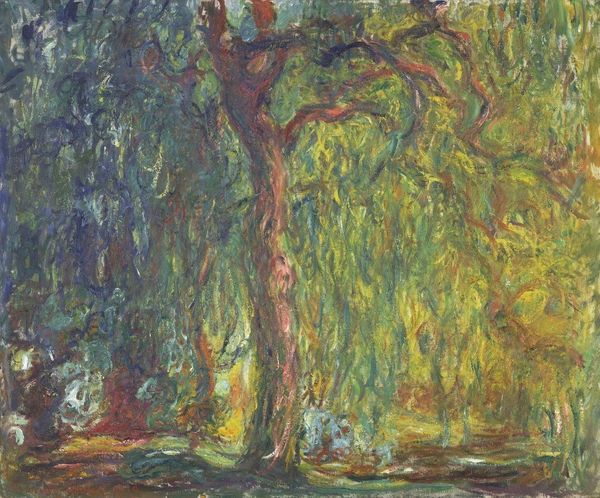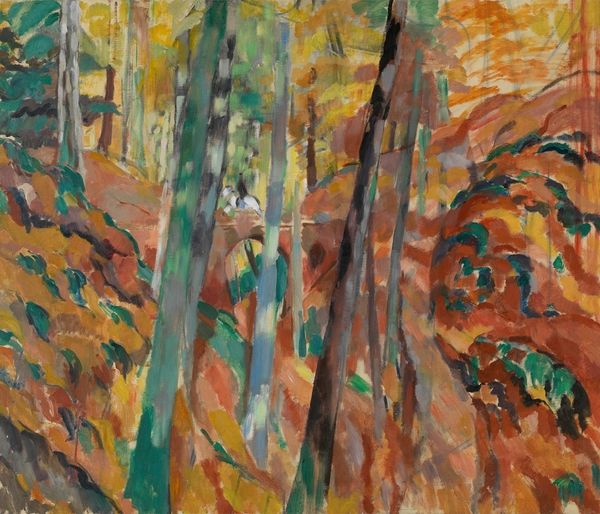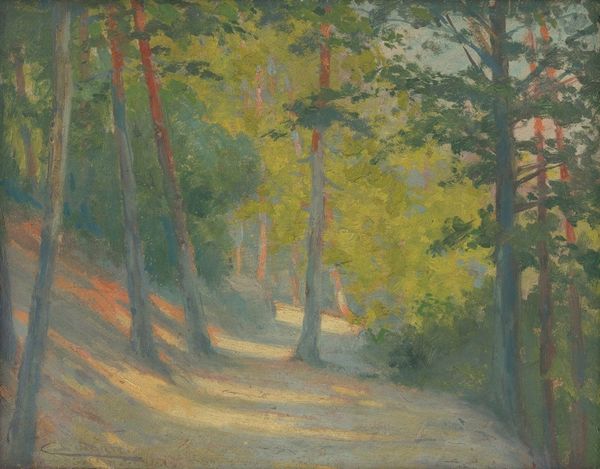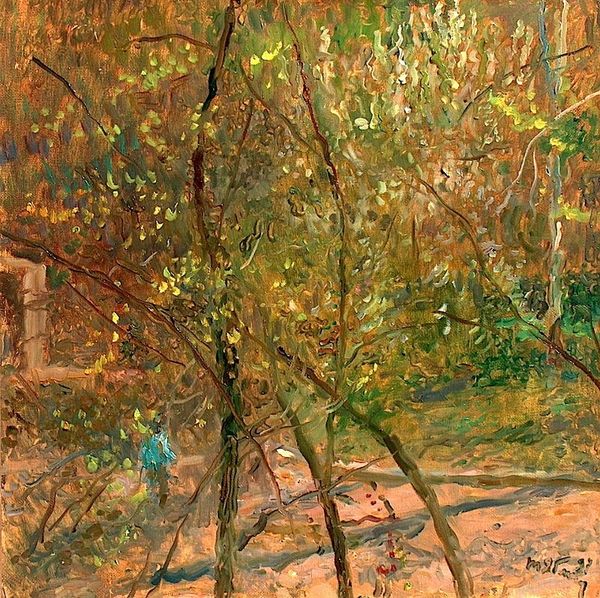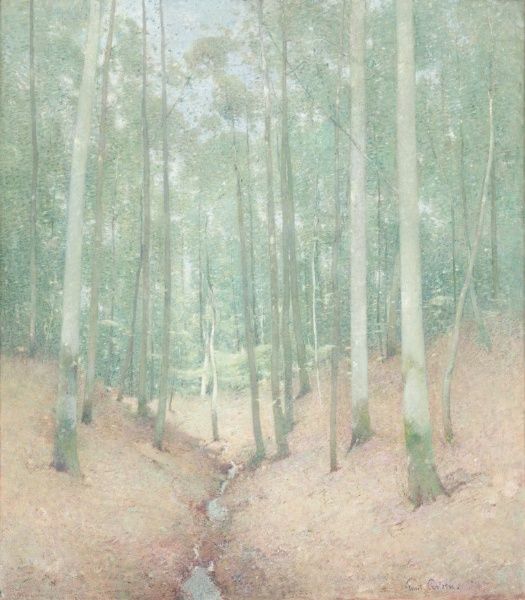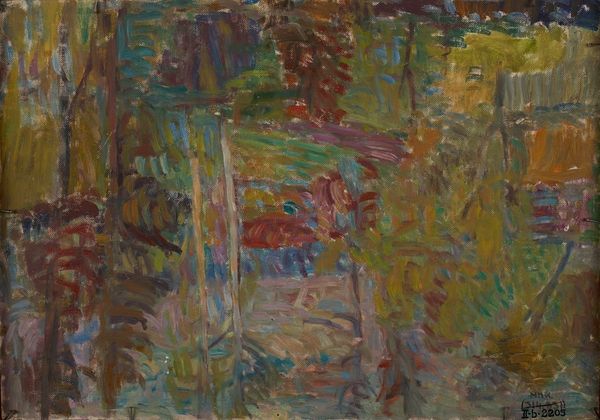
painting, plein-air, oil-paint, impasto
#
painting
#
impressionism
#
impressionist painting style
#
plein-air
#
oil-paint
#
landscape
#
impressionist landscape
#
impasto
Copyright: Public Domain: Artvee
Curator: Here we have Berthe Morisot’s "Forêt de Compiègne," completed in 1885. It's an oil on canvas painting executed en plein air, showcasing Morisot's distinct impressionistic style. Editor: My immediate reaction is of dappled sunlight and breezy movement. It's loose, almost unfinished—inviting speculation. The canvas breathes. But what of the figures, almost spectral in the background? Curator: Indeed. The figures function within a historical context as Morisot’s choice reflects a deliberate insertion of femininity in the canon of Impressionism and Landscape painting which historically had marginalized female experiences in natural environments. These almost ghostly figures could reflect constraints that women artists were confronted by as Morisot’s identity was rooted in similar tensions and challenges. Editor: Structurally, notice how Morisot's brushstrokes become individual notations, almost abstract up close, and the artist's distinct impasto work. These create visual vibrations of light, drawing attention to her technique, allowing viewers to trace a moment's sensation. Curator: And speaking to materiality, this work underscores Impressionism's radical departure from academic realism. Its formal approach subverts any straightforward narrative. Editor: Precisely! These quick notations seem almost feminist in their disruption, reflecting values inherent in artistic freedom and the challenges of a bourgeois society for a woman in her era. It invites viewers to consider social structures impacting creative pursuits of women like Morisot during a pivotal cultural time. Curator: Absolutely, and the artwork itself stands as an artifact of Impressionism, a formal rebellion, of how it broke with tradition. Editor: Morisot's rendering prompts reflection—how has gender shaped the production of art? These fleeting strokes hint at larger systemic issues, beyond pretty nature. The canvas invites introspection about art history's ongoing discourse, questioning how identities have been included or excluded and asking questions about power and artistic creation in the historical framework of artistic practices. Curator: Considering our present gaze, perhaps a deeper consideration of formalism allows appreciation, even enjoyment, even in the work’s art historical contexts. Editor: And with that, our journey concludes!
Comments
No comments
Be the first to comment and join the conversation on the ultimate creative platform.
